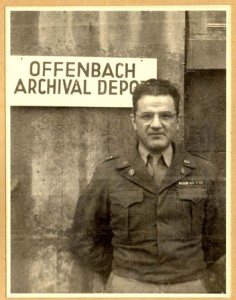In the current issue of American Archivist (v. 77 no. 1), Alex H. Poole‘s fine article, “The Strange Career of Jim Crow Archives: Race, Space, and History in the Mid-Twentieth-Century American South,” details the incredible, nearly unbelievable difficulties black scholars had in gaining access to the raw materials of history. Winner of the Theodore Calvin Pease Award for the finest work by an archival studies student, Poole is working towards his Ph.D. at University of North Carolina – Chapel Hill.
Poole’s extraordinary article chronicles the hardships encountered by noted African-American scholars such as John Hope Franklin, Lawrence Dunbar Reddick, and Helen G. Edmonds, among others. All of these individuals were well-established, respected scholars with Ph.D.’s, with university positions. Yet, when they tried to enter places like UNC, the Woman’s College, and other all-white institutions with major research collections, their presence could “generate a panic and an emergency among the administrators that was….an incident of historic proportions,” in the words of John Hope Franklin (as quoted by Poole).
The first dilemma the white staff faced was whether to admit Negro scholars at all. From the 1930s through the 1950s, most white institutions did not have formal policies in place. In the age of “separate but equal” most facilities assumed that black scholars would perform research at black institutions. At times, administrators at white institutions might reluctantly grant access, if it could be proven to their satisfaction that their repository was the only facility that housed the needed materials.
Even then, granting an African American scholar access was merely the first of a series of hurdles. A letter of introduction might be required, presumably written by a white scholar who could vouch for the African American’s credentials.
Where the black researcher would sit to do his or her work presented an enormous crisis. One library director wrote that white researchers would raise an “objection” if a black researcher was seated in the same reading room. In a number of cases, black scholars were given keys to the stacks, where they could work in a study carrel, alone and out of sight.
Yet another problem encountered by black scholars doing research at white institutions in the Jim Crow South was the indelicate matter of access to restroom facilities. Segregated restrooms apparently had stalls with steel doors; under no conditions would an exception be made to allow blacks to use white-only facilities; and the facilities were white-only because no provision had been made to provide “colored only” restrooms on an all-white campus. On at least one occasion, a black professor suffered the indignity of having to use a janitor’s closet, and Helen G. Edmonds was forced to make a long walk to Morehead Planetarium when she was doing research in the Southern Historical Collection at UNC.
Poole’s article contains many more details, and touches on issues of the facade of Southern “manners” for both races during Jim Crow. He illuminates the power that resides in access to archives – and the ways in which access (or lack thereof) correlates to the production of history. Finally, he concludes with jab at our modern consciousness, encouraging all archivists and administrators to understand how our work intersects with social justice, and urging us all to take this into account in our daily actions, from the reference desk to acquisitions.
Part 1 in a series.
Part 2 – Collections
Part 3 – Description
Part 4 – Acquisitions
